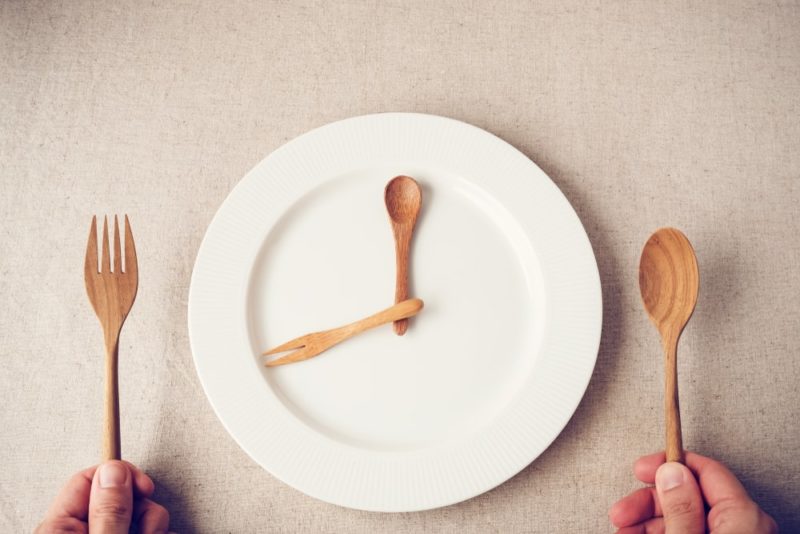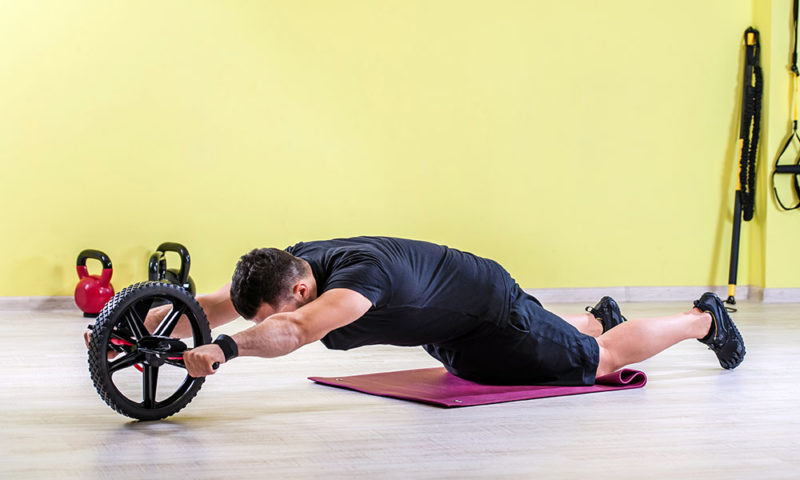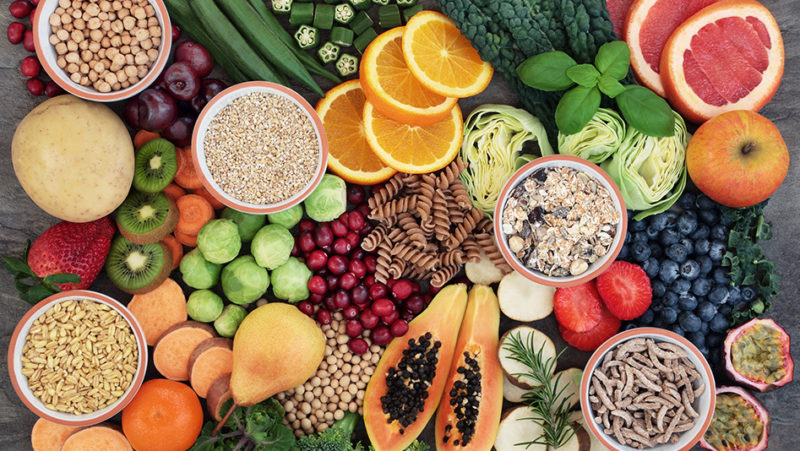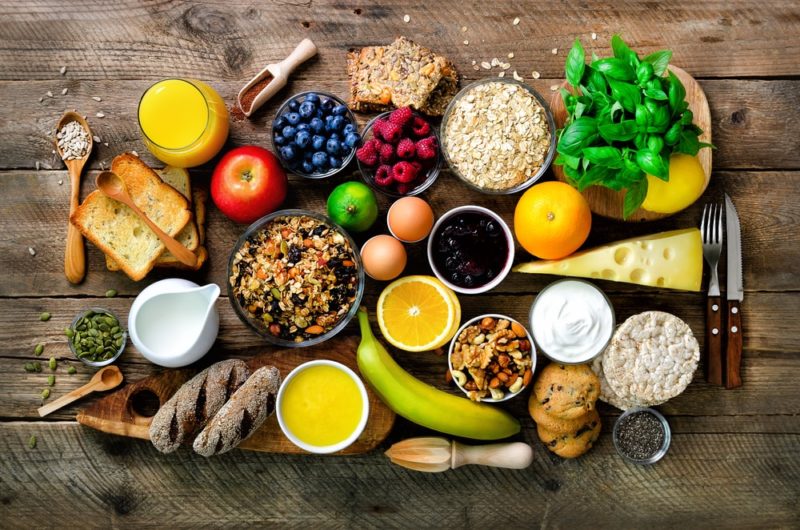Ramadan is the perfect opportunity to make significant changes to your fitness and well-being.
To make the most of this month, we have sorted practical tips that will help you get fitter, smarter and more active in just a month.
Turning your fitness around in a month – sounds cliché, but if you understand the few health hacks we’ve given you, you will be surprised – because your body is capable of a lot!
Here’s the thing – your body reacts quicker than you think. Human bodies are adaptable, and any changes to your healthy lifestyle will showcase instant results.
The thing with us humans is that once we see the results, we’re hooked. Motivation comes easy, and your determination will keep a check on you. It takes three weeks to develop a habit as consistency is essential. Working out, eating healthy, and practicing spirituality combined will have a synergic impact on you.
Therefore, your results will be fast, and in one month you can change your life.
Who is this for?
Anyone looking to:
- Transform their fitness in just one month
- Create new habits for a healthy lifestyle
- Re-compose their body – lose fat, maintain muscle, and become lean
- Make the most out of Ramadan
In this guide, we’ll help you understand the difference between Ramadan and intermittent fasting, and get into the details of working out, nutrition plan and more.
Want to get fit this month? Check out these 5 exercises you can do during Ramadan!
Ramadan Fasting | Intermittent Fasting | 6 Workout Tips | Nutrition | Foods To Avoid | Conclusion | FAQs
Ramadan Fasting

Ramadan is the holiest month in the Islamic Calendar. In Ramadan, Muslims fast from sunrise till sunset, abstaining from food and water.
The purpose of this spiritual act is to purify one’s soul by abstaining from basic human needs, build self-control and get closer to God. The whole act is a combination of things which impact the mind, body, and soul.
However, the benefits of abstaining from food and water can be taken out as a whole from the equation.
Fasting is one of the ancient healing traditions found in many cultures, religions, and sects. The modern name of popular fasting is Intermittent Fasting.
Trying to stay healthy this month? Learn more about the foods to eat and avoid this Ramadan!
Intermittent Fasting

There are various types of Intermittent Fasting with different window times to eat.
The most common Intermittent Fasting is 16/8, where you don’t consume food for 16 hours, and eat in the 8 hour period.
Intermittent Fasting is popular for weight loss, and some argue for body re-composition. There are some skeptics on Intermittent Fasting, which are unimpressed by its effectiveness.
We interviewed, Brandon Mentore to debunk some myths about Intermittent Fasting. His primary experience with fasting is body re-composition. He gained muscles and lost weight simultaneously, which you find rare with any fitness regime.
Check out the complete guide to fasting to learn more.
Ramadan Fasting Vs. Intermittent Fasting
There is only one fundamental difference: spirituality.
In practice, while Intermittent Fasting, you can drink water.
Apart from that, the only difference is the timings.
However, the physical and health benefits are mostly the same.
In either type of fasting, you can use the training tips to make the most out of your fasting days.
Get the most out of your Intermittent Fasting during Ramadan!
How to Workout During Ramadan: 6 Practical Workout Tips
Working out in Ramadan is challenging. With less time, energy, and motivation, you need to be smart about your fitness, not just disciplined.
What intensity to focus on, the best times to workout, and what frequency to have, are some crucial questions asked.
Let’s dive into some practical tips and critical questions that will make your training more effective.
1 – Clarify Your Goals

Understand what you are trying to achieve from Ramadan and set realistic goals.
Building muscle mass and making gains is something you should avoid, despite being at any fitness level.
Best fitness goals for Ramadan are getting a leaner body and maintaining muscle mass.
Fasting is one of the best strategies for weight loss. Cutting down fat and working out to tone your body are some of the best fitness perks of Ramadan.
As a result, you may find some truth in body recompositing if you have fat to lose.
Learn more about how to stay fit during Ramadan.
2 – Workout Routine

The frequency of your workouts varies to fitness levels and goals. However, the average answer is three times a week. If you have been working out six days a week, you can workout three times a week in Ramadan.
Most people can’t work out the same times they have been working out during the regular days. For best results, keep alternate workout days. For instance, Monday, Wednesday, and Friday are what most people set their days.
Ideally, you should be working out between 30 to 45 minutes.
If you already workout for 1 hour on regular days, then half an hour of workout session is best for you.
It also depends on your fitness and the intensity level. For high-intensity workouts, it is best to keep the session at 30 minutes. If low to medium intensity, then work out for 45 minutes.
Struggling to figure out what to eat? Check out the Ramadan nutrition’s do’s and don’ts.
3 – Intensity Of Training

This is where your fitness level is subjective the most. Experts suggest that you should decrease the intensity by at least 20%. Ramadan workouts should be less intense than your usual workouts. How can you do that?
Lower your reps and sets, decrease the weight, increase your rest time, and lower your speed on cardio. Your workout aims should be to maintain muscle mass. Given that you are already in a calorie deficit for the month, decreasing your intensity is best for you.
Seek inspo from Tam Khan’s intermittent fasting and workout routine guide!
4 – Choose The Right Time

This is the most common question asked and rightly so. Timing in Ramadan is a major factor which concerns most people due to busy schedules.
Let’s look at different timings:
- After Iftar: Great time to workout but you are little short of time. It can work for you if you take a pre-workout meal during iftar and go for a 10 minute HIIT.
- After Taraweeh prayers: After prayers, you have plenty of time to work out. Get a pre-workout shake and hit the gym. That is possible if you stay up the whole night till Suhoor.
- Before Suhoor: If you are disciplined and get up way before Suhoor, working out during this time can be helpful on your time and sleep schedule. However, for most, it is impractical and requires lots of determination and the right amount of sleep.
- While Fasting: It is only possible to work out right before you break your fast. It is a popular choice as most people are busy after iftar. Right before iftar, most got time to kill, and some believe engaging in physical activity can be a great way to stay fit and manage time.
- Fasted workouts are still debated on how they impact our body. Some experts say working out and sweating during your fast is not considered suitable for health. Exercise while dehydration and starving can cause you to lose muscle mass. Others suggest that working out while fasting helps you lose more fat. To conclude, if you are looking to lose weight, fasted cardio can be great for you, but if you are looking to maintain muscle then you should avoid fasted workouts.
5 – Type of Workout: Cardio or Strength
It all depends on your fitness goals. Because you have limited time and energy, it is best to do more of what fulfills your goals. Do look into cardio vs. weights to figure out what’s better for you.
If you are looking to lose weight, then cardio can be an excellent option. Doing a fasted cardio will be more effective if you are trying to cut fat. Make sure to wear proper gym joggers while doing cardio to maximize the mobility of your legs.
Strength Training or weight lifting should not be done while fasting. You will lose lean muscle tissue if you workout during fasting.
Check out the full body workout without equipment.
6 – Be Mindful Of Your Energy
With all the above tips, you can understand the best times which will work for you. However, you also need to understand what are your energy levels when you are working out.
People have different fitness levels, and those can vary for different times. Therefore, you need to find out what timing and level of intensity works for you.
Your diet in Ramadan is also a significant determinant at what times you might have the highest energy.
To be more mindful of your workout routine and nutrition plan in Ramadan, try keeping a fitness journal!
Nutrition Guide
The month of Ramadan is about conscious eating. Your metabolism slows down as for most extended hours you are not consuming water and food.
Most people have poor eating habits during Ramadan which causes them to gain weight. On the contrary, Ramadan is the month where you should lose weight, and feel great about your health.
Fasting is the best way to lose weight and Ramadan is the best opportunity if you know how to take care of your diet.
We will discuss what you should eat in Iftar, dinner, and Suhoor, what portions and what foods to avoid.
Eating healthy in Ramadan is easier than you think.
Iftar

Iftar is when you break your fast during Ramadan at the sunset.
Your aim should be to bring back your lower sugar levels back to normal and have more fluid intake. Your body needs a quick burst of energy so that you can get all set for Maghrib prayer and/or 10 minute HIIT session.
What To Eat In Iftar?
- Fruits and dried fruits that provide you a high amount of sugar for bursts of energy. A handful of dried fruits. For instance, dates are the best source of energy. One serving of any fruit
- Fresh juice without any artificial sugar added – 250 ml
- Milk – which has natural sugar and water to replenish – 250 ml
After iftar, you can have your main meal of the day; dinner.
If you’re not sure about what to eat in Iftar, look at the Ramadan food diet plan by Mahmood Hussein!
Dinner

In Ramadan, dinner will be your most massive meal. However, the dinner is supposed to be healthy as it is not a feast.
Here is a balanced approach with right portions.
1 – Complex carbs
- You need complex carbs as they release energy slowly throughout the day.
- Examples: Rice, whole grain bread, oats, lentils, potatoes, etc.
- One small bowl = 2 servings
- Two servings for women, 3-4 for men
Try the overnight oats recipe to have a delicious oatmeal ready for your dinners!
2 – Proteins
- Proteins take the longest to break down. The slow process will help you curb your cravings. Great option for muscles if you are having dinner after the workout.
- Examples: baked or grilled chicken, beef, lamb, eggs, chickpeas, bean, fish and other seafood.
- One serving = 1 ounce or 30 grams
- 2-3 servings for women, 4-5 for men
Want more protein? Check out these 4 high protein vegetarian recipes!
3 – Vegetables
- Vegetables are low in calories and high in fiber. If you want to be lean, then fill your plate with vegetables and eat as much as you can.
- Examples: green leafy vegetables, onion, cucumbers, carrots, cauliflower, etc.
- One serving = 80 grams – at least have 2-3 servings
This Ramadan, make any of these 5 yummy vegetarian salads just under 500 calories!
4 – Dairy
- Dairy is not very popular but essential. Some are lactose intolerant, but it can be consumed in different forms and moderate portion.
- One serving = 1 cheese slice = 1 cup of milk = 1 small cup of yogurt or cottage cheese
Try these 5 protein smoothies to stay fit this Ramadan!
5 – Healthy Fats
- You will add healthy fats mostly during your cooking or prep. They are high in calories so should be consumed in small amounts
- Examples: 1 tbsp olive oil, a handful of nuts, fish, i.e., high in omega-3 fatty acids,
- Other examples; avocado, hummus, olive oil on vegetables, etc.
Fond of healthy fats? Switch to a low carb, high fat Keto diet this Ramadan!
Midnight Snack

If you are hungry at midnight, make sure to eat lighter snacks.
Tip: After 30 minutes of dinner, or 30 minutes before sleeping, have one serving of fruit to aid digestion.
Cooking Method
Grill, boil, steam, bake, and the shallow fry will maintain nutrients. Avoid frying or deep frying as it removes most nutrients
Post-midnight, go for the 10 superfood snacks you can munch as much as you want guilt-free!
Suhoor

Suhoor is the last meal before you fast. Therefore, eating a healthier meal in Suhoor is vital towards having an energetic day.
Try to consume a wholesome moderate meal with proteins, complex carbs, and healthy fat. This balanced approach and composition will keep you energetic and filled for many hours.
Some great options are peanut butter toast with banana slices, eggs on toast, and smoothies.
Try to have one meal with a smoothie.
Tip: Do not overeat; portion size in Suhoor will be half your dinner.
You can also try the 7 healthy breakfasts that are easy to prepare.
Foods to Avoid
- Fast food and processed food. Example: burger, chips, deep fried chicken and samosas.
- Refined carbs such as white bread and white flour.
- Too much fatty foods such as oily curries and anything fried which drips of oil.
- Too much sugar – pastry, cakes, traditional sweets, etc.
- Avoid spicy food which may upset the stomach with indigestion and bloating.
- Reduce your caffeine intake from coffee, tea, and sodas.
Try these 4 low fat desserts for Iftar!
To Conclude
Ramadan is a blessed month where Muslims are given the opportunity to be mindful of their acts. Eating healthy and exercising is a way to take care of your body. And taking care of your health is a blessed act.
The above tips and guidelines are not just for Muslims but anyone who is looking to benefit from any Intermittent Fasting. The dynamics are slightly different – however, the essence is the same when it comes to body performance.
FAQs
Yes, it is completely safe to workout during Ramadan. However, make sure you’re timing your workouts right and you’re engaging in the right kind of physical activity that is suited for you. Instead of heavy lifting or high intensity workouts, go for low to moderate impact and intensity workouts. Try to lift weights after you break your fast or before Suhoor – any time it’s breezy and doesn’t cause you discomfort. You can choose to hit the gym before the Iftar or Suhoor. Make sure you’re hydrated and your energy levels are regulated when working out.
Any low intensity and low impact workout is the best for Ramadan. This ranges from walking to bodyweight exercises, swimming, cycling, and doing inclined walks on the treadmill. Anything that doesn’t immediately exhaust you or doesn’t cause fatigue is good for you. Make sure you always listen to your body and adjust your workout intensity based on how you’re feeling.
Absolutely! You can workout while fasting. However, stick to low intensity and less weights. To prevent fatigue and dehydration, it’s important to avoid overexerting yourself. If you’re working out while fasting, then do so right before Iftar or right after Suhoor so your body is nourished.

